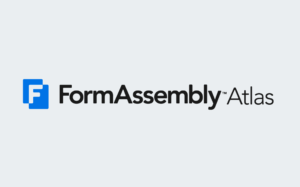FormAssembly’s Workflow Approvals give you the power to build decision-making checkpoints directly into your workflow. With approvals, you can pause the flow of a submission, assign a reviewer, and control what happens next based on their response, whether that’s an approval, denial, or another path entirely.
These approval steps help you shape more than just the data you collect – they define who interacts with it, when, and how. Whether you’re managing internal processes, enforcing compliance, or gathering team input, approval workflows ensure that responses are reviewed by the right people before the next step kicks in.
Watch the clip below from our annual virtual user conference, FormFest 2025, to take a closer look at how they work, or read on for a detailed overview.
Why Use Workflow Approvals?
Approval steps allow you to:
- Assign responses to specific individuals or teams for review
- Define what happens based on their decisions
- Avoid manual processes for exceptions or escalations
- Maintain oversight and compliance throughout your workflow
Example Use Case:
Consider an expense reimbursement process. A team member submits a request. If the amount is standard, a manager can approve it. If it’s higher than usual, the form escalates to a director. Once approved, it routes to Accounting for processing. All within a single, streamlined workflow.
Approval Workflow Structures in FormAssembly
Depending on your process and stakeholders, there are several ways to structure your approval workflows. Each one gives you flexibility to match your organization’s specific requirements.
1. Linear Approvals
Approvers sign off in a defined sequence (e.g., manager → director → executive).
Best for: Hierarchical organizations or processes requiring step-by-step signoff.
2. Conditional Approvals
Approval routes change based on response data.
Example: Budget requests under $500 go to one reviewer; larger requests route to a different team.
Best for: Workflows with thresholds, risk levels, or categories that influence routing.
Pro Tip: Use conditions to customize workflows based on region, department, request type, or other fields. This is especially useful for large-scale processes like grant applications.
3. First Responder Approvals
The first person in a group to respond determines the outcome.
Best for: Fast-moving teams where any member has authority to approve.
Real-World Use Case: The FormAssembly Knowledge Team uses this model to review internal training and resource requests. The first available team lead responds, reducing response time from days to minutes.
4. Consensus Approvals
All designated approvers must review and approve the submission.
Best for: Decisions that require alignment across multiple departments.
Important: This model ensures accountability, but can lead to delays if approvers are unavailable. To reduce bottlenecks, consider assigning backup approvers or enabling collaboration on approval steps.
5. Escalating Approvals
Requests automatically escalate based on set criteria (e.g., high priority, high risk).
Best for: Situations where certain triggers require senior-level attention.
Example: A university could auto-escalate student safety reports to a dean while routing lower-level issues to student services without the student ever seeing a difference in the process.
Best Practices for Building Effective Approval Workflows
To build workflows that are efficient, effective, and frustration-free:
- Limit the number of approvers per step. Too many slow things down. Too few can increase risk. Strike the right balance.
- Eliminate unnecessary approval stages. If a step doesn’t add value, cut it. Streamlined workflows get completed faster.
- Collaborate early with stakeholders. Bring in the right teams early to avoid rework, identify edge cases, and spot opportunities for automation.
Reminder: A strong workflow doesn’t just automate steps – it reflects how your organization operates. It supports better decisions by getting the right eyes on the right data at the right time.
Real-Life Demo: Sales Discount Approvals
Let’s say your sales reps need to offer discounts but aren’t allowed to edit discount fields directly in Salesforce. You can build a workflow with approvals that looks like this:
- <5% discount: No approval needed; data goes straight to Salesforce.
- 5–10% discount: First responder approval by either a team lead or manager.
- >10% discount: Escalates to manager approval before continuing.
Each path uses a combination of conditional logic, approval steps, and Salesforce connectors to ensure the right level of oversight without compromising efficiency.
Pro Tip: Use a “Go To” step to reuse existing connectors and keep your workflow clean and maintainable.
Final Thoughts
Workflow Approvals are a powerful way to add structure, control, and compliance to your data collection processes. From budget reviews to internal requests, they help ensure decisions are made by the right people at the right time.
